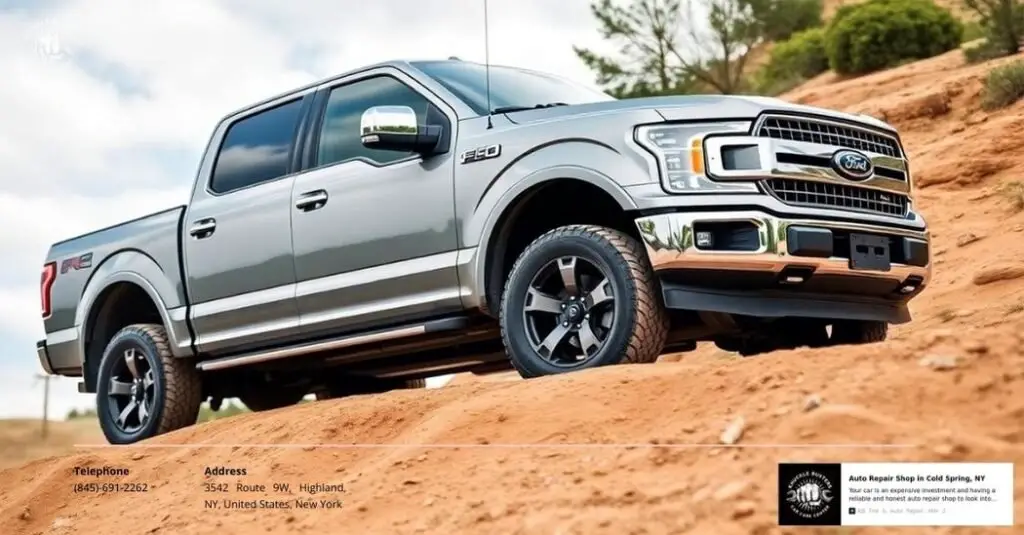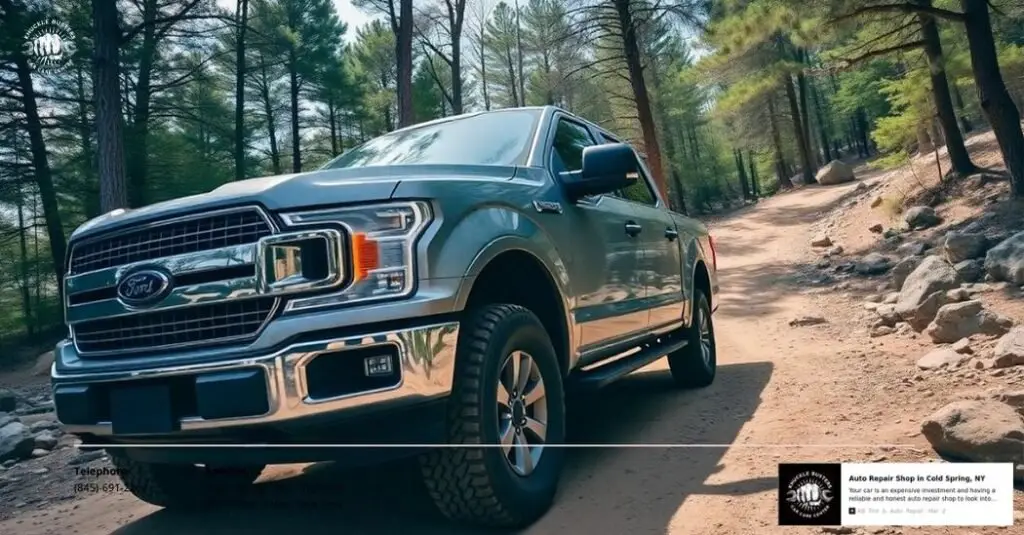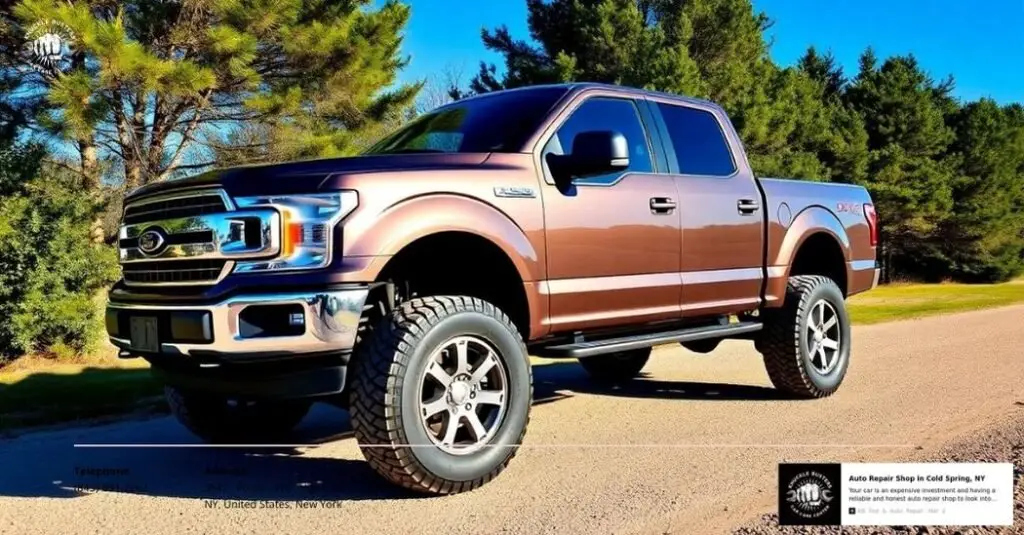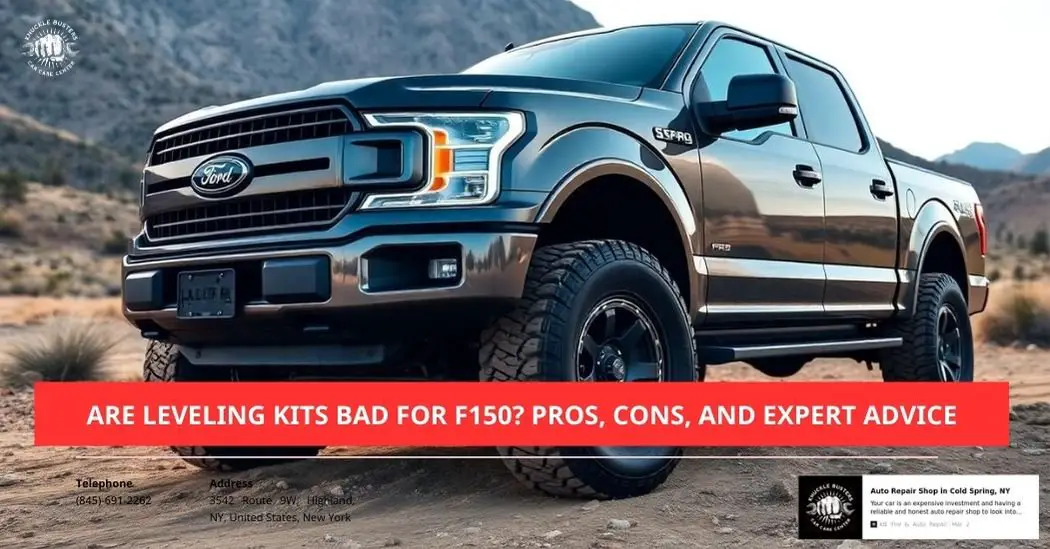When it comes to customizing our Ford F-150s, leveling kits are often one of the first upgrades we consider. They promise to even out the truck’s stance, improve ground clearance, and make room for larger tires. But with all the buzz around them, it’s natural to wonder—are leveling kits actually bad for our F-150s?
We’ve all heard the mixed opinions. Some say they’re a game-changer, while others warn about potential wear and tear. It’s easy to feel torn when deciding if this popular mod is worth it. Let’s take a closer look at what leveling kits really do, the pros and cons, and whether they’re a smart choice for our trucks.
What Are Leveling Kits?
Leveling kits are aftermarket components that adjust a vehicle’s front suspension to match the height of the rear. For Ford F-150 owners, these kits offer a practical way to achieve a more balanced appearance and enhance functionality.
How Leveling Kits Work
Leveling kits modify the front suspension by introducing spacers, strut extensions, or torsion keys. These components raise the front end to eliminate the factory rake found on most trucks. Without altering the rear suspension, the adjustment creates an even stance. In most cases, this increased height also allows for bigger tires to be installed without rubbing against the fenders.
Common Types Of Leveling Kits
- Strut Spacers: Strut spacers are the most common leveling solution for F-150 trucks with coil-over strut suspension. They sit above the factory struts, boosting the front height without altering ride quality.
- Torsion Keys: Torsion keys apply to trucks with torsion bar suspensions. By replacing factory keys, these kits allow for more adjustment to lift the front.
- Coil Spring Spacers: Coil spring spacers fit between the coil springs and their mount, increasing the ride height. They’re often used on older F-150 models or specific heavy-duty configurations.
- Adjustable Struts: Adjustable struts replace factory struts entirely, offering a customizable lift level. These are more advanced but may require a larger budget.
Benefits Of Leveling Kits For F150

Leveling kits offer both practical and aesthetic advantages for the Ford F-150. They improve the truck’s stance, functionality, and overall performance in specific scenarios.
Improved Aesthetic Appeal
Leveling kits improve a truck’s appearance by creating a balanced stance. By raising the front to match the rear, they give the F-150 a leveled and uniform profile, which many owners find visually striking. This enhancement often complements the truck’s rugged design and boosts its road presence.
Increased Ground Clearance
Leveling kits increase the space between the front undercarriage and the ground. This added clearance can enhance the F-150’s off-road capabilities by helping it navigate rough terrain with reduced risk of damaging components. For drivers frequently encountering uneven surfaces or obstacles, this is a significant advantage.
Enhanced Towing Capability
Leveling kits spread weight more evenly across the truck’s axles while towing. A leveled suspension often prevents sagging in the back, maintaining stability and ensuring better handling when hauling trailers or heavy loads. This makes towing safer and more efficient for F-150 owners.
Potential Drawbacks Of Leveling Kits For F150

Leveling kits adjust the suspension geometry, which can result in unintended consequences. While they enhance the truck’s stance and functionality, there are specific downsides to consider.
Suspension Wear And Tear
Leveling kits can increase stress on suspension components. Altering the factory geometry impacts parts like ball joints and other front-end elements, potentially leading to faster wear over time. Some drivers, however, report minimal issues even after extensive use, such as one case where a 2.5-inch leveling kit functioned smoothly for over 15,000 miles. Regardless, it’s important to regularly inspect the suspension after installing a kit to address any early signs of damage.
Impact On Fuel Efficiency
Leveling kits have a minimal direct effect on fuel efficiency. Larger or heavier tires often paired with these kits contribute more significantly to lower MPG. Additionally, raising the front of the vehicle can increase wind resistance, but the added drag from a leveling kit is relatively minor compared to full lift kits. Ensuring proper tire selection can help mitigate fuel economy losses.
Steering And Handling Concerns
The altered suspension geometry may slightly impact steering and handling. The front-end height changes can modify the steering angle and affect alignment, potentially causing a slight reduction in precision. Proper installation and alignment services can minimize these effects and maintain stable handling.
Factors To Consider Before Installing A Leveling Kit

Installing a leveling kit on our Ford F-150 requires careful evaluation of various factors. Assessing these aspects helps ensure the modification aligns with how we use our truck and maintains performance standards.
Purpose Of Your Truck Usage
The primary use of our F-150 determines if a leveling kit is suitable. For trucks used in road driving, towing, or light off-roading, leveling kits provide aesthetic appeal and functional benefits like improved stance and weight distribution. However, if heavy off-roading is part of our routine, a lift kit may be better due to its ability to offer more ground clearance and protection for the undercarriage.
Compatibility With Current Suspension
Our truck’s suspension system compatibility plays a key role when choosing a leveling kit. Some F-150 models already feature optimized front suspensions, and adding a leveling kit could alter suspension geometry beyond manufacturer recommendations. This might lead to increased wear on components like ball joints or tie rods. Ensuring the leveling kit matches our F-150’s suspension design keeps stress on parts within acceptable limits.
Quality Of The Leveling Kit
The quality of the leveling kit directly impacts performance and durability. High-quality kits made from robust materials like billet aluminum or heavy-duty steel provide better longevity and stability compared to cheaper alternatives. Reputable brands test their kits extensively to ensure reliability, reducing the risk of issues such as noise, misalignment, or component failure. Investing in a high-grade kit helps maintain ride quality and safety for our F-150.
Expert Opinions On Leveling Kits For F150

Leveling kits remain a popular choice for F-150 owners, but experts emphasize understanding their benefits and potential challenges. Insights from mechanics and owner experiences reveal critical details about their impact.
Insights From Mechanics
Mechanics highlight that leveling kits adjust the front suspension to match the rear height, improving the truck’s stance and allowing for larger tires. This adjustment increases ground clearance, making the F-150 more capable on rough terrain. However, they caution that this modification can lead to increased wear on components like ball joints and tie rods. Additional wind drag from the higher front end may also reduce gas mileage slightly.
They note that the type of leveling kit affects performance and cost. Spacer kits are affordable and easy to install but may provide less ride quality compared to leveled struts or coilovers. Mechanics also remind us to verify warranty implications, as some vehicle warranties may be voided after aftermarket modifications like leveling kit installation.
Stories From F150 Owners
F-150 owners who have installed leveling kits report mixed results. Many appreciate the enhanced aesthetics and practicality of fitting larger tires, which improves the truck’s off-road ability. Some owners note better handling when towing, as the leveling kit balances the overall weight distribution.
Others have experienced challenges, particularly with suspension wear and steering control. For instance, certain owners mention issues like oscillation in the steering system or uneven tire wear after prolonged use. Regular maintenance and professional installation are often cited as ways to minimize these problems and maximize the longevity of their trucks.
Conclusion
Leveling kits can be a great addition to your F-150 if you’re looking to enhance its stance, improve ground clearance, or fit larger tires. However, they’re not without their challenges, and it’s important to weigh the pros and cons carefully. Understanding your truck’s needs, choosing a high-quality kit, and ensuring proper installation can make all the difference in how well the upgrade works for you. By staying informed and proactive with maintenance, you can enjoy the benefits of a leveling kit while minimizing potential drawbacks.
Frequently Asked Questions
What is a leveling kit for a Ford F-150?
A leveling kit is an aftermarket component designed to raise the front suspension of a Ford F-150 to match the height of the rear. This modification provides a more balanced stance, increases ground clearance, and allows for the installation of larger tires without altering the rear suspension.
What are the benefits of installing a leveling kit on an F-150?
Leveling kits improve vehicle stance, enhance ground clearance, and allow for larger tires, making the truck more capable for off-road activities. Additionally, they improve towing stability by distributing weight evenly across the axles and preventing rear sagging.
Can a leveling kit affect the handling of my F-150?
Yes, a leveling kit can slightly alter suspension geometry, which may impact steering and handling. However, these effects are usually minimal if the kit is properly installed and followed by an alignment.
Does a leveling kit reduce fuel efficiency?
A leveling kit itself has minimal impact on fuel efficiency. However, installing larger tires, which commonly accompany leveling kits, can reduce MPG due to increased weight and wind resistance.
Do leveling kits cause wear and tear on suspension components?
Leveling kits may increase stress on suspension components like ball joints and tie rods, potentially leading to faster wear. Regular inspections and maintenance after installation can help address these concerns.
What types of leveling kits are available for the Ford F-150?
Common types of leveling kits include strut spacers, torsion keys, coil spring spacers, and adjustable struts. Each type offers different methods for lifting the front suspension and suits various performance needs and budgets.
Should I use a leveling kit for heavy-duty off-roading?
For heavy off-roading, a full lift kit may be a better option, as it provides more ground clearance compared to a leveling kit. Leveling kits are ideal for light off-roading, towing, or improving the truck’s stance for daily driving.
Is professional installation necessary for leveling kits?
While it is possible to install a leveling kit yourself with the right tools and knowledge, professional installation is recommended. Experts can ensure proper alignment, functionality, and safety post-installation.
Will a leveling kit void my F-150’s warranty?
A leveling kit might affect the warranty on suspension-related components, depending on your dealership’s policies. Check with your manufacturer or dealer before installation to understand warranty implications.
How do I choose the right leveling kit for my F-150?
Consider the intended use of your truck (towing, off-roading, etc.), compatibility with your current suspension, and the quality of the kit. Opt for high-quality kits made from durable materials for lasting performance and safety
Related Posts:
